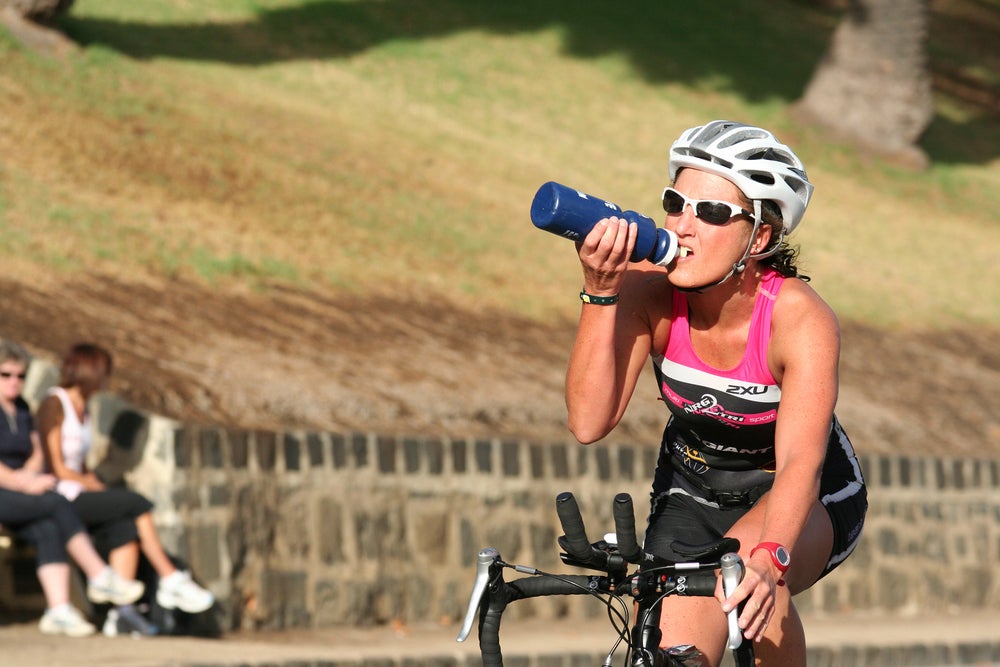How Much Fluid Are You Consuming In A Race?

Photo: <a href="http://www.shutterstock.com/gallery-4404p1.html?cr=00&pl=edit-00">max blain</a> / <a href="http://www.shutterstock.com/editorial?cr=00&pl=edit-00">Shutterstock.com</a>
Ask any multisport competitor how much nutrition he or she consumes during a race, and you’ll likely get a classic Type-A triathlete answer: “X bottles of fluid for Y calories every Z minutes.”
That answer is probably inaccurate, says a new study out of the University of Minnesota. According to lead researcher Patrick Wilson, triathletes’ ability to gauge fluid intake during a race is fallible, which could lead to race-day complications such as dehydration, hypo- or hypernatremia, and insufficient calories to meet the body’s energy demands.
The study of 53 triathletes on the run leg of a half Ironman race found discrepancies in self-reported fluid intake compared to measured fluid intake.
“There were a number of individuals that were off by 10 to 20 ounces when comparing their self-reported intake to measured intake,” says Wilson.
Factors contributing to triathletes’ inaccurate recall include the number of aid stations, the duration of the event, the size and shape of the containers used, and the experience level of the athletes.
RELATED: A Half-Ironman (70.3) Nutrition Plan
For athletes wanting to stay on top of a controlled fueling schedule, Wilson suggests triathletes choose accurate methods for quantifying fluid intake, including:
- Carry your own bottles on a fuel belt (or, in longer races, using Special Needs bags).
- If fueling on a schedule, program a watch to alert you of food/drink intervals.
- Review course maps to determine the frequency of aid stations at your race. Adjust your fueling plan accordingly.
- Practice fueling during training. Make note of how much, how often, and what effects certain foods/drinks have on your performance.
- Get calories and electrolytes from food (such as gels and chews), which are portioned and measurable, rather than relying on fluids.